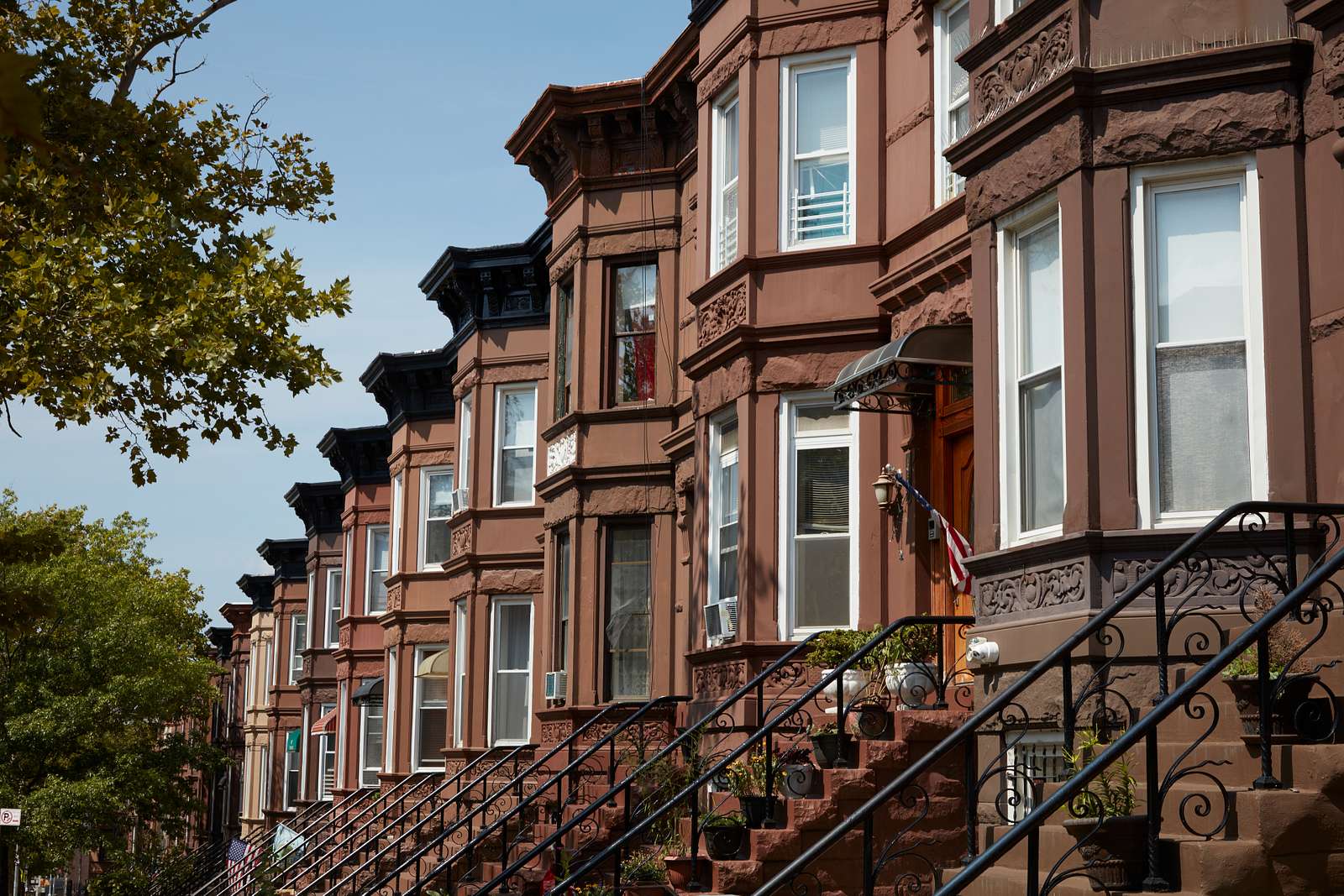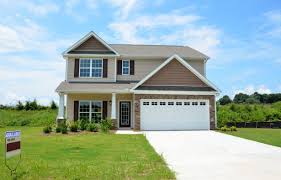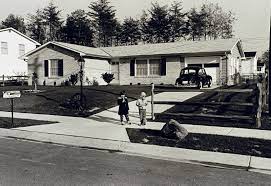INTRO TO REAL ESTATE INVESTING
How to Analyze a Neighborhood

Knowing how to analyze a neighborhood is a fundamental skill for a real estate investor. Being able to thoroughly and accurately assess the quality of an area gives you a better understanding of what a home in that area is worth and will help you understand who might want to buy that home and why. The number one factor in real estate investing is location. It is difficult to overstate the importance of buying properties in the right location because the location is one part of a property you can't change. Hopefully, after reading this article, you will be better able to evaluate a neighborhood and understand the factors that make it appealing to potential buyers and investors.
Employment Opportunities
The number of employment opportunities available in an area is one of the most significant driving factors that cause the price of homes to increase. Where there are jobs, there are people, and where there are people, there is a need for homes. Areas with a healthy economy and a growing number of jobs are often areas where home values are rising. And areas with a stagnant or declining number of jobs typically don't see the same type of rapid appreciation.
If you're looking to invest in real estate with the goal that your property will appreciate over time, it may be wise to look for areas that have a growing labor market as well.
If you're looking to invest in real estate with the goal that your property will appreciate over time, it may be wise to look for areas that have a growing labor market as well.
Proximity to Key Locations
Another thing to pay attention to when purchasing a home or investment property is how easy or difficult it is to access key locations. For example, consider how long it takes to get from the property to the following places:
- Work
- Schools
- Highways
- Hospitals
- Gas Stations
- Recreation
- Shopping
Crime Rates
It's always a good idea to check the local crime rates of an area before buying a property. Safe neighborhoods tend to have higher property values and rental incomes than areas with crime problems.
Areas with higher crime rates may sell for cheaper but are likely a riskier investment since they could be harder to resell later, and renters may be less likely to pay each month. However, this doesn't mean that all properties in less desirable neighborhoods are poor investments. Sometimes you can find a diamond in the rough. Perhaps you discover a neglected property that can be cleaned up and flipped for a profit. Or maybe you can negotiate a significant discount on a property because it used to be a meth house.
Also, you will probably want to check and see if there are any registered sex offenders in the area. Buying a home next door to a registered sex offender could significantly reduce the value of your home. As a result, it's something you want to be aware of before making a purchase.
Areas with higher crime rates may sell for cheaper but are likely a riskier investment since they could be harder to resell later, and renters may be less likely to pay each month. However, this doesn't mean that all properties in less desirable neighborhoods are poor investments. Sometimes you can find a diamond in the rough. Perhaps you discover a neglected property that can be cleaned up and flipped for a profit. Or maybe you can negotiate a significant discount on a property because it used to be a meth house.
Also, you will probably want to check and see if there are any registered sex offenders in the area. Buying a home next door to a registered sex offender could significantly reduce the value of your home. As a result, it's something you want to be aware of before making a purchase.
Pride of Ownership
Take a drive through the neighborhood and look at the houses nearby. Notice whether or not people take care of their yards and see what kinds of cars they drive. Doing this can help you quickly get a feel for what type of people live in the neighborhood. Well-taken-care-of neighborhoods can play on buyers' emotions and command a higher price point than unkept neighborhoods.
Additionally, you want to be aware of the neighborhood because it is typically much better to buy the worst home in the best neighborhood than to buy the best home in the worst neighborhood. Buying the worst house in the area means there is room for improvement, and any improvements you do to the property will likely pay for themselves and then some. Additionally, repairing the property should make the neighbors happy because improving the worst home on the block helps the neighborhood become a little nicer and increases the value of the neighbors' properties.
Alternatively, buying the best home in the worst neighborhood often has the opposite effect. Improving the home probably won't yield a good return on your investment because very few people will want to pay a premium price to live in a lower-quality area. Additionally, people attracted to a lower-income area may not be able to afford the nicest home on the block. And as a result, the property may be challenging for you to sell later.
Additionally, you want to be aware of the neighborhood because it is typically much better to buy the worst home in the best neighborhood than to buy the best home in the worst neighborhood. Buying the worst house in the area means there is room for improvement, and any improvements you do to the property will likely pay for themselves and then some. Additionally, repairing the property should make the neighbors happy because improving the worst home on the block helps the neighborhood become a little nicer and increases the value of the neighbors' properties.
Alternatively, buying the best home in the worst neighborhood often has the opposite effect. Improving the home probably won't yield a good return on your investment because very few people will want to pay a premium price to live in a lower-quality area. Additionally, people attracted to a lower-income area may not be able to afford the nicest home on the block. And as a result, the property may be challenging for you to sell later.
"For Rent" and "For Sale" Signs
Watch out for neighborhoods with many "for rent" or "for sale" signs. Too many available properties signals that people don't want to live in the area. If you plan to invest in a rental property, be especially wary of multiple "for rent" signs in the neighborhood because it may indicate the local market is oversaturated with renters. An oversaturated market may make it more difficult for you to find and keep good tenants and may reduce the potential profitability of the property.
However, on the other hand, a large quantity of properties for sale or for rent could mean that you have more leverage as a buyer and may be able to negotiate a better deal on a property. If you are able to strike a bargain price on a rental property, it's possible that the lowered price may make up for the increased risk of a higher vacancy rate, and your investment could still be worthwhile.
However, on the other hand, a large quantity of properties for sale or for rent could mean that you have more leverage as a buyer and may be able to negotiate a better deal on a property. If you are able to strike a bargain price on a rental property, it's possible that the lowered price may make up for the increased risk of a higher vacancy rate, and your investment could still be worthwhile.
School Districts
School districts are a very influential consideration for potential buyers and renters. Pay attention to which school boundaries the property falls in because school boundaries don't always line up with city lines.
Different school districts could be why two nearly identical properties sell at substantially different prices. Being aware of school boundaries can help prevent you from finding yourself in a situation where a home you've purchased doesn't appraise for as much as you thought it would. Or you find the house is much harder to sell than you thought it would be.
Different school districts could be why two nearly identical properties sell at substantially different prices. Being aware of school boundaries can help prevent you from finding yourself in a situation where a home you've purchased doesn't appraise for as much as you thought it would. Or you find the house is much harder to sell than you thought it would be.
Functional & External Obsolescence
Consider carefully before purchasing a home with functional or external obsolescence. Careful consideration is especially crucial when obsolescence is due to inherent features or external factors that are difficult or important to change.
An example of functional obsolescence that's difficult to change is a property built near railroad tracks. It may be less desirable than homes in a quieter location because the excess noise from the railroad is viewed by many as a disturbance and may even wake people up at night. The proximity to a railroad is a difficult thing to change. You can't just tear the tracks out to make the property more appealing. In most cases, you are forced to accept that a railroad is nearby and whoever lives there will learn to deal with the noise.
Another example of functional obsolescence is homes that don't seem to belong in an area. For example, a 1-bed, 1-bath house in a neighborhood filled with 4-bed, 2-bath houses feels out of place. In this case, depending on the layout of the home, the functional obsolescence may be curable by adding a bathroom or separating one big room into two or three smaller bedrooms. Updating the home's blueprint to match other nearby properties is a great way to increase the resale value.
Buying properties with functionally obsolete factors isn't always bad as long as you understand the difficulties and have a plan to deal with them. That plan might be to negotiate a lower purchase price, or it might be to correct an issue that scares most other investors away. Properties with functional or external obsolescence can make you rich or broke so do your homework before investing your time and money into one of these properties.
An example of functional obsolescence that's difficult to change is a property built near railroad tracks. It may be less desirable than homes in a quieter location because the excess noise from the railroad is viewed by many as a disturbance and may even wake people up at night. The proximity to a railroad is a difficult thing to change. You can't just tear the tracks out to make the property more appealing. In most cases, you are forced to accept that a railroad is nearby and whoever lives there will learn to deal with the noise.
Another example of functional obsolescence is homes that don't seem to belong in an area. For example, a 1-bed, 1-bath house in a neighborhood filled with 4-bed, 2-bath houses feels out of place. In this case, depending on the layout of the home, the functional obsolescence may be curable by adding a bathroom or separating one big room into two or three smaller bedrooms. Updating the home's blueprint to match other nearby properties is a great way to increase the resale value.
Buying properties with functionally obsolete factors isn't always bad as long as you understand the difficulties and have a plan to deal with them. That plan might be to negotiate a lower purchase price, or it might be to correct an issue that scares most other investors away. Properties with functional or external obsolescence can make you rich or broke so do your homework before investing your time and money into one of these properties.
Construction
New real estate developments in an area often denote an up-and-coming location. Building new structures like roads, restaurants, office buildings, or apartment complexes impacts the value of nearby properties. If you notice a considerable amount of construction in an area, it may indicate that properties in the area are increasing in value.
Local governments often invest in up-and-coming locations in an effort to make the city a more desirable place to live. City officials also sometimes make investments to improve run-down areas of town as an attempt to "clean up" the city. In both cases, investments like these often cause nearby property values to appreciate.
So, if you notice significant improvements or construction projects, it may be a sign that local officials think this is a place worth investing in. We know this is true because that is where they are investing taxpayer dollars. Additionally, if you notice privately owned businesses being built, such as franchise restaurants, it is a good indicator that other investors also view this area as a worthwhile investment.
Just noticing what is real estate projects are occurring nearby is a quick way to get a feel for how other people view the area. This is a great way to quickly and effectively evaluate the investment potential of a location without doing much research.
Local governments often invest in up-and-coming locations in an effort to make the city a more desirable place to live. City officials also sometimes make investments to improve run-down areas of town as an attempt to "clean up" the city. In both cases, investments like these often cause nearby property values to appreciate.
So, if you notice significant improvements or construction projects, it may be a sign that local officials think this is a place worth investing in. We know this is true because that is where they are investing taxpayer dollars. Additionally, if you notice privately owned businesses being built, such as franchise restaurants, it is a good indicator that other investors also view this area as a worthwhile investment.
Just noticing what is real estate projects are occurring nearby is a quick way to get a feel for how other people view the area. This is a great way to quickly and effectively evaluate the investment potential of a location without doing much research.
Home Values
This technique for evaluating a neighborhood is so obvious it almost goes without saying. It is always a good idea to look at the value of nearby homes to get a sense of how much a particular home may sell for. Homes in the same neighborhood usually have a lot of similarities, such as similar lot sizes, square footage, number of bedrooms, etc. As a result, they also typically have similar market values.
A number of online tools are available to help you estimate home prices even without direct access to the MLS. For example, Zillow is a platform that provides a "Zestimate" for every property, which is their best guess at the estimated value. The county tax assessor's website is another helpful resource where you can look up the tax-assessed value of any property. However, please note the tax-assessed value is not the same as the actual value. County assessors usually multiply the actual value by a certain percentage to arrive at the assessed value. But, with a little research and a little math, you can convert the tax-assessed value into the county's estimated actual value, which is a much more useful number.
Properties in the same neighborhood offer the best comparable prices when evaluating a property because the location is crucial in real estate appraisals. As a result, when analyzing a neighborhood for potential investment opportunities, it's a good idea to examine the values of similar, nearby properties.
A number of online tools are available to help you estimate home prices even without direct access to the MLS. For example, Zillow is a platform that provides a "Zestimate" for every property, which is their best guess at the estimated value. The county tax assessor's website is another helpful resource where you can look up the tax-assessed value of any property. However, please note the tax-assessed value is not the same as the actual value. County assessors usually multiply the actual value by a certain percentage to arrive at the assessed value. But, with a little research and a little math, you can convert the tax-assessed value into the county's estimated actual value, which is a much more useful number.
Properties in the same neighborhood offer the best comparable prices when evaluating a property because the location is crucial in real estate appraisals. As a result, when analyzing a neighborhood for potential investment opportunities, it's a good idea to examine the values of similar, nearby properties.
Traffic Maps
Many home buyers like the idea of living in a quiet neighborhood. So, the question is, what counts as quiet? That's a subjective opinion that will vary from person to person. Fortunately, there are practical methods you can use to quickly evaluate whether a home of interest is in a "quiet neighborhood" or not.
Traffic maps are one of the easiest ways to do this. Google maps has a traffic map view that will show you how busy streets are by highlighting busy streets in red and vacant streets in white. The busier the road is, the darker the red line will be. It only takes a second to pull up google maps, see how busy the streets in the neighborhood are, and get a feel for whether it is a "quiet neighborhood" or not. In addition, google maps is a valuable resource for comparing neighborhoods. For example, you could easily compare the neighborhood you live into the neighborhood you're thinking of investing in and get a good idea of whether it is more or less busy than what you are used to.
Another easy way to evaluate traffic is to sit across the street from the house you are considering investing in and count how many cars drive by in a given time period. You will intuitively sense whether it feels "busy" or not.
Traffic maps are one of the easiest ways to do this. Google maps has a traffic map view that will show you how busy streets are by highlighting busy streets in red and vacant streets in white. The busier the road is, the darker the red line will be. It only takes a second to pull up google maps, see how busy the streets in the neighborhood are, and get a feel for whether it is a "quiet neighborhood" or not. In addition, google maps is a valuable resource for comparing neighborhoods. For example, you could easily compare the neighborhood you live into the neighborhood you're thinking of investing in and get a good idea of whether it is more or less busy than what you are used to.
Another easy way to evaluate traffic is to sit across the street from the house you are considering investing in and count how many cars drive by in a given time period. You will intuitively sense whether it feels "busy" or not.
Comprehensive Zoning Map
Every city has a comprehensive zoning map that specifies how each property is currently zoned. Zoning is the method cities use to regulate where certain types of properties are located. For example, a zoning map may specify one area as low-density residential housing, another part of the city as high-density residential housing, and another part of the city as industrial manufacturing. If this were the case, the city would require that single-family homes be built in the low-density section of town, apartment complexes in the high-density part of town, and new factories in the industrial manufacturing area.
It's important to know how an area is zoned because any structure built on the property will be subject to certain restrictions. Here are a few of the most common zoning restrictions:
If you want to use a property for a use that isn't approved, you can apply for a zoning change. But the process to rezone a property is often long and complicated. If you are in a situation where you want to apply for a zoning change, your best chance for success is if the new zoning proposal matches the city's general plan. In many cases it's helpful to hire a competent real estate attorney who is familiar with the rezoning process and can navigate that landscape for you. An experienced professional's assistance will often speed up the process and increase the likelihood of your request getting approved.
It's important to know how an area is zoned because any structure built on the property will be subject to certain restrictions. Here are a few of the most common zoning restrictions:
- Height and bulk restrictions - Restrictions governing how tall buildings can be and how much space they can occupy on the lot.
- Lot size restrictions - Restrictions governing the size of a lot.
- Setback restrictions - Restrictions governing how far a structure must be from the property line.
If you want to use a property for a use that isn't approved, you can apply for a zoning change. But the process to rezone a property is often long and complicated. If you are in a situation where you want to apply for a zoning change, your best chance for success is if the new zoning proposal matches the city's general plan. In many cases it's helpful to hire a competent real estate attorney who is familiar with the rezoning process and can navigate that landscape for you. An experienced professional's assistance will often speed up the process and increase the likelihood of your request getting approved.
General Plan
The city's general plan is a broad overview of what the city hopes to see in the future. The general plan will usually be slightly different than the comprehensive zoning map. It's helpful to be aware of the city's general plan for any areas you are considering investing in. For example, you may run into issues if you purchase a property that doesn't align with the general plan and can't use the property as you originally intended.
The general plan can also be helpful for spotting potential investment opportunities. For example, some entrepreneurial investors look for properties currently zoned as one real estate type (such as single-family residential). Then they purchase the property and get it rezoned as a more valuable type (such as a professional office). Then the investor can sell the property and keep the profit.
The general plan can also be helpful for spotting potential investment opportunities. For example, some entrepreneurial investors look for properties currently zoned as one real estate type (such as single-family residential). Then they purchase the property and get it rezoned as a more valuable type (such as a professional office). Then the investor can sell the property and keep the profit.
Property Research
When analyzing an investment property, it's always a good idea to examine the neighborhood as well. Analyzing key aspects of the surrounding area can provide you with valuable information about the value of the property as well as any potential issues that may be hard to see at first. My hope is that the topics discussed in this article have helped you identify several key areas to investigate and will help make your real estate investing more successful.


